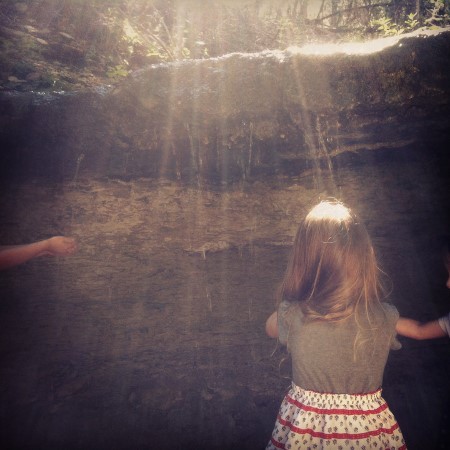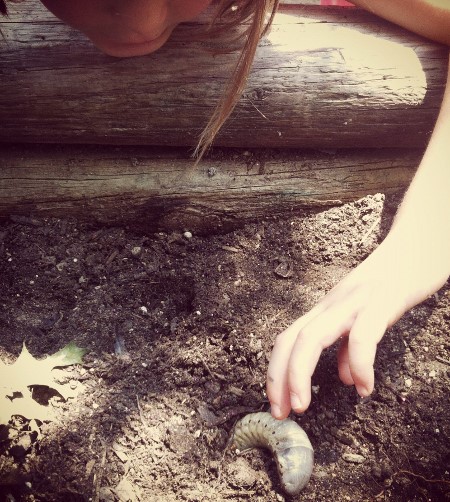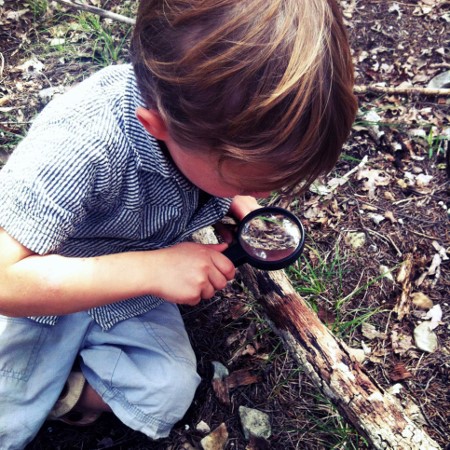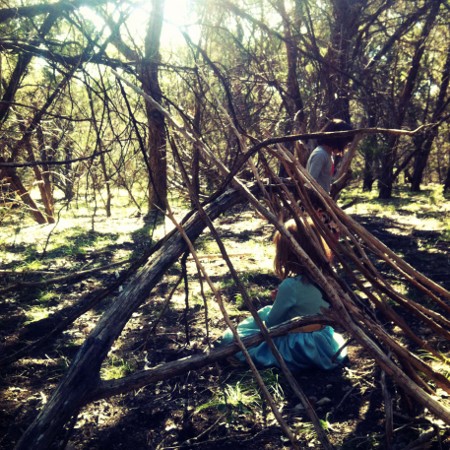How should a four-year-old spend her day?
/Nicole Haladyna has a great passion for the outdoors and has been teaching in natural environments for years. She founded the Woodland Schoolhouse, where she is currently enrolling children 3-1/2 to 5 years old. In this guest essay for Alt Ed Austin, Nicole provides a sparkling window into the world of Woodland kids.

The morning after the downpour, we hike to our favorite creek and check out “our waterfall.” The air is fresh and damp. Some of us sit in a meditative-like state, arms wrapped around knees, watching water flow over rocks. Some scale the surrounding embankments seeking a higher perspective. Others crouch, carefully collecting small fossils or making fairy houses.
Whispers and giggles are muffled by the moving water. We notice the discarded insects beneath a spider’s web and ask each other “How?” and “Why?” Then we retrieve our sketch pads and draw what we see. We shake wet branches and pretend it’s raining as their leaves empty upon us.

New discoveries are always welcome, but there is something more profound about knowing a place. Really knowing a place. In our short lives we’ve been here so many times—not just visited but been here with all of our senses.
We’ve felt this place weather the seasons. We know its sounds when brisk or icy. We know its voice when the air hangs still and hot. We’ve crunched on its leaves, sipped its raindrops. We’ve watched its caterpillars descend from the trees and reappear as delicate butterflies and moths. We’ve buried our hands in this gritty soil. We’ve dipped our bare feet in these creeks. We’ve observed how buds spring from the tiniest twigs and transform into lush leaves in only a matter of days. We’ve snuck up on deer—so many deer!—beneath our special tree. We’ve discovered their bones beneath the fallen leaves. We witness signs of birth and death every day, and we embrace it all. We seek to understand it all.

Every child deserves to have such an intimate relationship with the natural world. This sense of place does not develop through periodic field trips but with learning and loving one place first. Holding and protecting a place and its inhabitants so dearly, knowing it isn’t yours at all: this is the most beautiful lesson in sharing, empathy, and gratitude.
Much of our curriculum at Woodland Schoolhouse derives from our inspirations, and in this place, inspiration and wonder envelop us. There are countless creatures, relationships, landforms, and concepts here worthy of in-depth study. We re-create our findings in paint, clay, pencil, and more. We document our questions and make a plan for learning answers.

In pursuit of these higher objectives, unintended lessons abound. We bump into each other, intellectually and physically, and practice navigating these conflicts constructively. Without the rigid time constraints so often present in a preschool schedule, we take our time and really get to the bottom of the issue. We’re eager to master basic mathematical concepts when they’ll help us confirm exactly how many tadpoles are here today versus last week, or how high that deer had to reach to eat the fruit from that branch. Writing is meaningful when we’re drawing and labeling animal tracks we’ve discovered or dictating a letter to our grandmother about the bird’s nest we found . . . and how we can’t wait to see her again.
We do not need to be pushed or coerced into learning. We must be trusted, supported, and inspired.

Can you think of a better way for a four-year-old to spend her day?
I can’t.
Nicole Haladyna









